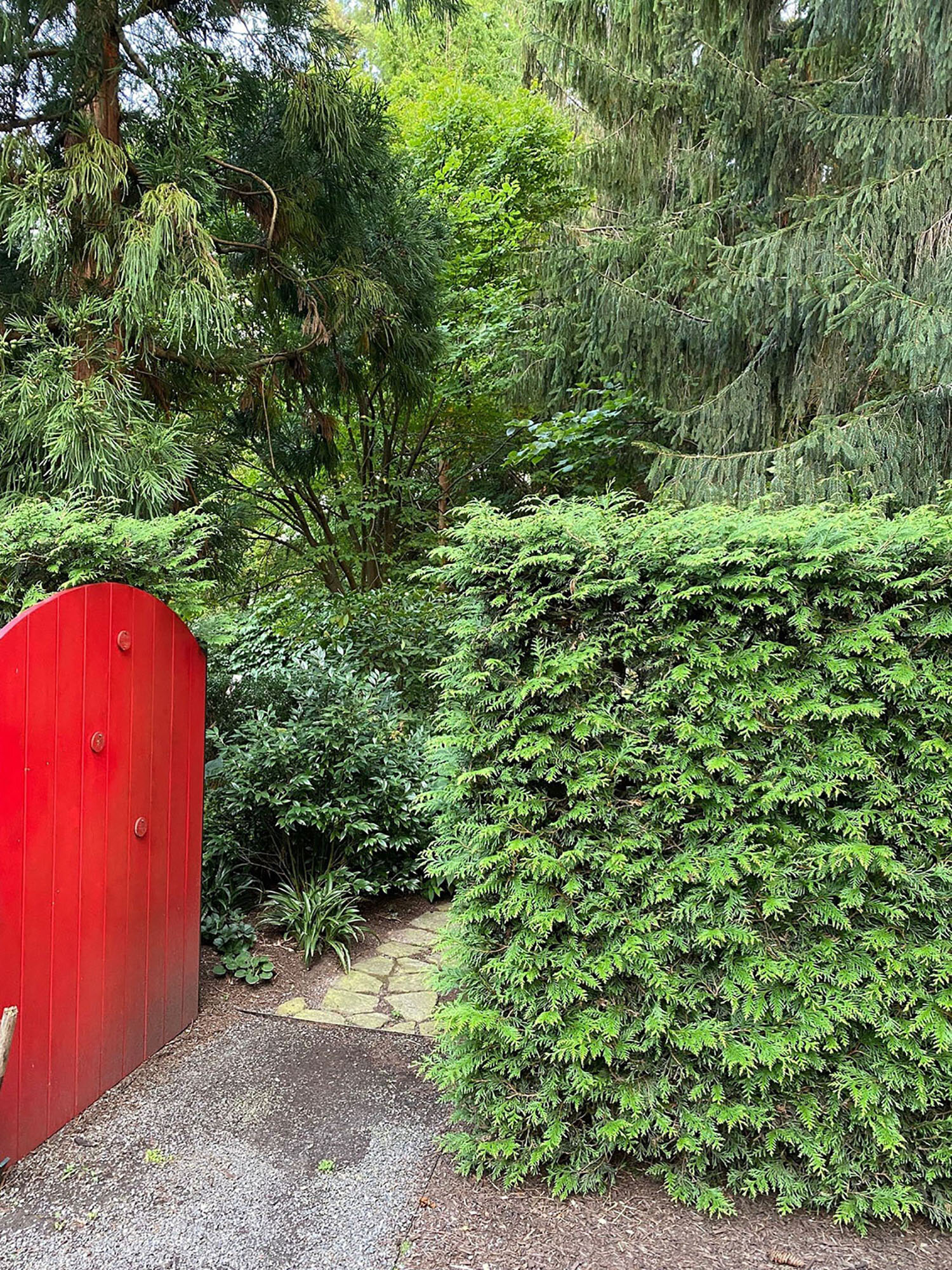The Living Fence
In the Garden with Andrew
Andrew Bunting. Photo courtesy of the Pennsylvania Horticultural Society.
For privacy in the garden, I have always found that one of the most effective approaches is to use living plants as formal or informal hedges. Even simply adding mixed plantings can provide you and your neighbors with great privacy.
One of the most effective screening plants In my home garden in Swarthmore is an arborvitae relative, Thjua ‘Green Giant’. This arborvitae differs from most of its relatives in that it has a strong central trunk that prevents it from splaying open after heavy wet snows, unlike many other selections. It’s a recipient of the Pennsylvania Horticultural Society Gold Medal and has many other outstanding attributes. It is relatively narrow in its spread and can be described as upright and pyramidal. It has dark evergreen foliage, making it a great screening plant year-round. It grows very quickly — up to three or four feet per year — and, unlike many other arborvitaes, it is relatively deer resistant.
I have used it at home in many different ways. On one side of my property, where my neighbors and I are both close to the property line, I have a hedge that is about twenty feet tall. I am mostly able to stay on top of its maintenance using a pole saw and pole pruner; I prune it every other year. I’ve also used it in my vegetable garden, I wanted to enclose the garden, but did not want a high hedge, because it would have put the garden into shade. So about 10 years ago, I planted ‘Green Giant’ as relatively small plants on centers of five feet. Today it is a solid, seven-foot-tall hedge, which gets pruned every August into a tightly clipped, “boxed” hedge.
Thuja ‘Green Giant’. Photo: Andrew Bunting
On the corner of Swarthmore and Dartmouth avenues in Swarthmore, there is a fantastic Thuja ‘Green Giant’ planting, set in about 15-20 feet from the curb, which is not pruned. (Because that corner is very busy, the owners wanted it for protection and to enclose their side yard. This planting was a perfect solution.)
Down the street is a coniferous hedge between two properties. It was probably planted 15 years ago. It is Cryptomeria japonica ‘Yoshino’, Japanese red-cedar, another evergreen with a pyramidal habit. It has more of a billowing texture than ‘Green Giant’, but it too has a strong central stem; it exhibits reasonable deer resistance; it is adaptable, growing in sun or shade; and it has received the Gold Medal. The branching can be allowed to go to the ground to create an impenetrable hedge. Another approach I have taken in my garden with some individual trees is to limb up the lower branches over time.
For areas where I might not need a tall conifer, I put myriad broadleaved evergreens that help with a host of screening needs. There’s a condition that many urban and suburban gardens have, called dry shade, which often occurs at the base of mature deciduous trees—or, in my case, at the base of a row of tall Norway spruces, Picea abies, which have been limbed up to about 20 feet. When you have dry shade, it can literally rain an inch and the soil will still be powder dry at the base. Fortunately, there are a handful of broadleaved evergreens that can thrive in dry shade conditions and that also provide excellent screening.
I love the various false hollies, Osmanthus. While they look very much like a holly, they are more closely related to the olive, lilac, and ashes. Osmanthus heterophyllus ‘Gulftide’ is a “tough as nails” evergreen shrub with spiny, holly-like leaves. It grows in shady, dry areas with an upright habit, reaching between 10 and 15 feet tall. In the fall, it is covered with many tiny white—and very fragrant—flowers. ‘Goshiki’ has green and yellow variegated foliage, which is great for winter effect. ‘Rotundifolius’ has a more rounded leaf. And if you want the ultimate in fierce spines, ‘Sasaba’ could protect a fortress. I mostly use these in their natural form, but they can all be “shaped up” instead with some judicious pruning.
For decades, the “go to” hedging planting was the privet hedge, Ligustrum; it is still fairly popular. This deciduous hedge does have some shortcomings: to stay well-groomed, it needs to be pruned many times during the growing season; and it is an exotic in our natural areas which has become so invasive that it tends to choke out desirable native shrubs.
Send your gardening questions to editor@swarthmorean.com. Put “Garden” in the subject line.
Andrew Bunting is vice president of public horticulture at the Pennsylvania Horticultural Society and vice president of the Swarthmore Horticultural Society.






